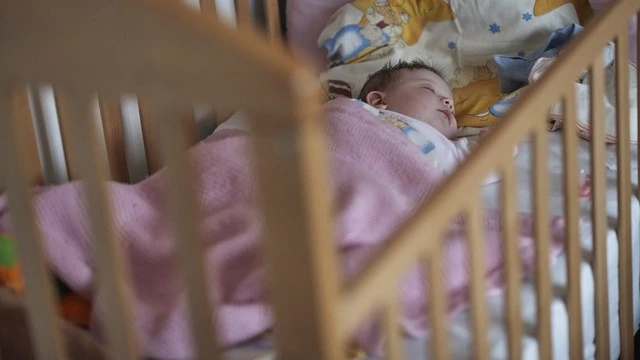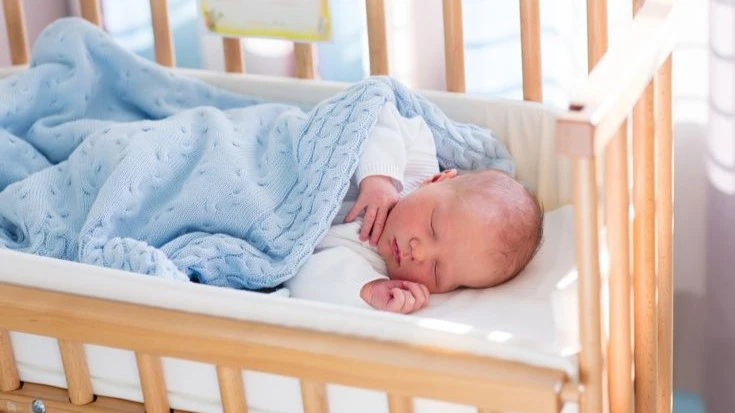Let me tell you something right off the bat: getting a newborn to sleep in a bassinet can feel like one of the biggest parenting hurdles. It’s not just about the baby’s comfort—it’s about your sanity too. Sleep deprivation is no joke, and finding a routine that actually works can feel impossible. But here’s the thing: with the right strategies, it is possible.
Here’s a wild fact for you: Around 70% of parents report struggling to get their baby to sleep in a bassinet during those first few weeks. That’s a lot of sleepless nights and desperate searches for solutions.
In this article, I’ll share all the nitty-gritty details of getting your baby to snooze soundly in their bassinet. From tips I’ve picked up through trial and error (like why swaddling is a game-changer) to simple changes that can make a huge difference, we’ll cover it all. Ready to finally get some sleep? Let’s dive in!
Why Use a Bassinet for Your Newborn?
When my first baby was born, I didn’t think twice about where they’d sleep. I figured any surface would do as long as it was soft and cozy. Big mistake. A bassinet isn’t just a convenience; it’s a safe and practical solution for newborns. It keeps your baby close to you during those endless night feedings.
The American Academy of Pediatrics (AAP) states that the safest way for babies to sleep is on their backs in their own sleeping space, whether that’s a crib, bassinet, or play yard. These following safe sleep practices has been shown to reduce the risk of Sudden Infant Death Syndrome (SIDS) by up to 50%.
Safety is the biggest reason to go with a bassinet. Experts recommend following the ABCs of safe sleep: babies should sleep Alone, on their Back, and in a Crib or Bassinet.
Sleep Smarts
I’ll admit, I didn’t always follow the rules perfectly—there were nights I was tempted to let my baby sleep on me.
But I learned that sticking to the guidelines wasn’t just about safety; it also helped my baby develop better sleep habits. If you’re on the fence about investing in a bassinet, think of it as a long-term win for your baby’s sleep health and your sanity.

Common Reasons Why Newborns Resist Sleeping in a Bassinet
Let’s get real—babies can be downright stubborn about sleeping in a bassinet. Here are the main reasons why:
- Separation Anxiety: Newborns are used to the snug comfort of the womb, and a wide-open bassinet can feel unsettling to them. This can make them cry the moment they’re laid down, even if they were asleep just seconds earlier.
- Environmental Factors: Bright lights, loud noises, or an uncomfortable room temperature can disrupt your baby’s sleep. Experts recommend maintaining a room temperature between 68-72°F to create an optimal sleep environment.
- Feeding Routines: If your baby falls asleep while feeding and then wakes up in a bassinet, they might feel confused and upset. Keeping your baby slightly awake during feeding can help them transition more easily to the bassinet.
- Swaddling Issues: Swaddling can help a baby feel secure, but it’s tricky to master. My first attempts looked like a crumpled mess, but once I got it right, swaddling became a game-changer for helping my baby feel calm and sleep longer in the bassinet.If you’re unsure about the proper swaddling technique, check out our How to Swaddle Your Baby Step by Step guide for a detailed breakdown.
Each of these factors can play a role, so addressing them individually can make a big difference in getting your baby to sleep peacefully in their bassinet.
As one sleep expert says, “Understanding your baby’s needs is like solving a puzzle—each piece matters.”
Start small, focus on one factor at a time, and you’ll see progress.
Preparing the Perfect Bassinet Sleep Environment

Setting up a sleep-friendly environment was a game-changer for me. Here’s how I made it work:
- Start with the Right Mattress: The bassinet mattress needs to be firm, not soft and plush like we might prefer for ourselves. I found one that met safety standards after reading reviews—a good place to start if you’re shopping around.
- Invest in Breathable Fitted Sheets: Having a few extras is a must. Trust me, those late-night diaper blowouts are no joke, and having backup sheets saved me countless times.
- Add White Noise: Babies are used to constant sound in the womb, so a white noise machine was a lifesaver. It helped mimic that familiar environment, keeping my baby calm.
- Use Blackout Curtains: Even during the day, these were a total game-changer. They helped my baby understand the difference between sleep time and playtime, making naps easier.
- Adjust the Room Temperature: One night, my baby wouldn’t stop fussing, and I realized the room was too cold. Experts recommend keeping the room between 68-72°F, and that quick adjustment made a huge difference. It honestly felt like I had cracked some secret baby-sleep code.
By focusing on these elements, I created a cozy, safe space that made all the difference in how to get newborn to sleep in bassinet.
Step-by-Step Guide to Getting Your Newborn to Sleep in a Bassinet

Here’s the nitty-gritty of what worked for me:
- Establish a Bedtime Routine: I started with a simple routine—bath, feed, swaddle, and then a lullaby. Consistency was key. After a few days, my baby started associating these steps with sleep.
- Swaddle for Comfort: Swaddling made my baby feel snug and secure, just like in the womb. I used a Velcro swaddle because, let’s be real, I wasn’t great at the blanket kind.
- Use a Pacifier: Not every baby likes pacifiers, but mine found it soothing. It also helped them stay calm as they drifted off.
- The “Drowsy But Awake” Trick: This one took some practice. I’d place my baby in the bassinet when they were drowsy but not fully asleep. It helped them learn to self-soothe, which was a total game-changer for longer stretches of sleep.
- Stay Close but Hands-Off: The first few nights, I kept my hand on my baby’s chest to reassure them, but I avoided picking them up unless absolutely necessary. This taught them that the bassinet was a safe, comfy place to sleep.
It wasn’t perfect every time, but these steps made a noticeable difference. And yes, there were setbacks (hello, sleep regressions), but sticking to the plan paid off in the end.
What to Do If Your Baby Still Won’t Sleep in the Bassinet
If your baby is still refusing the bassinet, don’t panic. One thing I learned is that patience is key. Sometimes, babies just need a little extra time to adjust.
You might try tweaking your approach. For instance, if swaddling isn’t working, experiment with a sleep sack. Or if white noise isn’t cutting it, try nature sounds instead. I once spent a whole week trying different sounds until I found one that worked. It felt ridiculous at the time, but it was worth it.
Another trick is to warm the bassinet with a heating pad before putting your baby down (just make sure to remove it before laying them in). The warm surface can make the transition from your arms less jarring.
And hey, if nothing seems to work, it’s okay to ask for help. A pediatrician or sleep consultant can offer guidance tailored to your baby’s needs.
Conclusion
Figuring out how to get newborn to sleep in bassinet isn’t easy, but it’s absolutely doable with the right strategies.
Remember, every baby is different, so don’t get discouraged if it takes time. Focus on creating a safe, cozy sleep environment and being consistent with your routine.
You’ve got this! If you’ve tried any of these tips, let me know how they worked for you—or share your own tricks in the comments. Sweet dreams!









